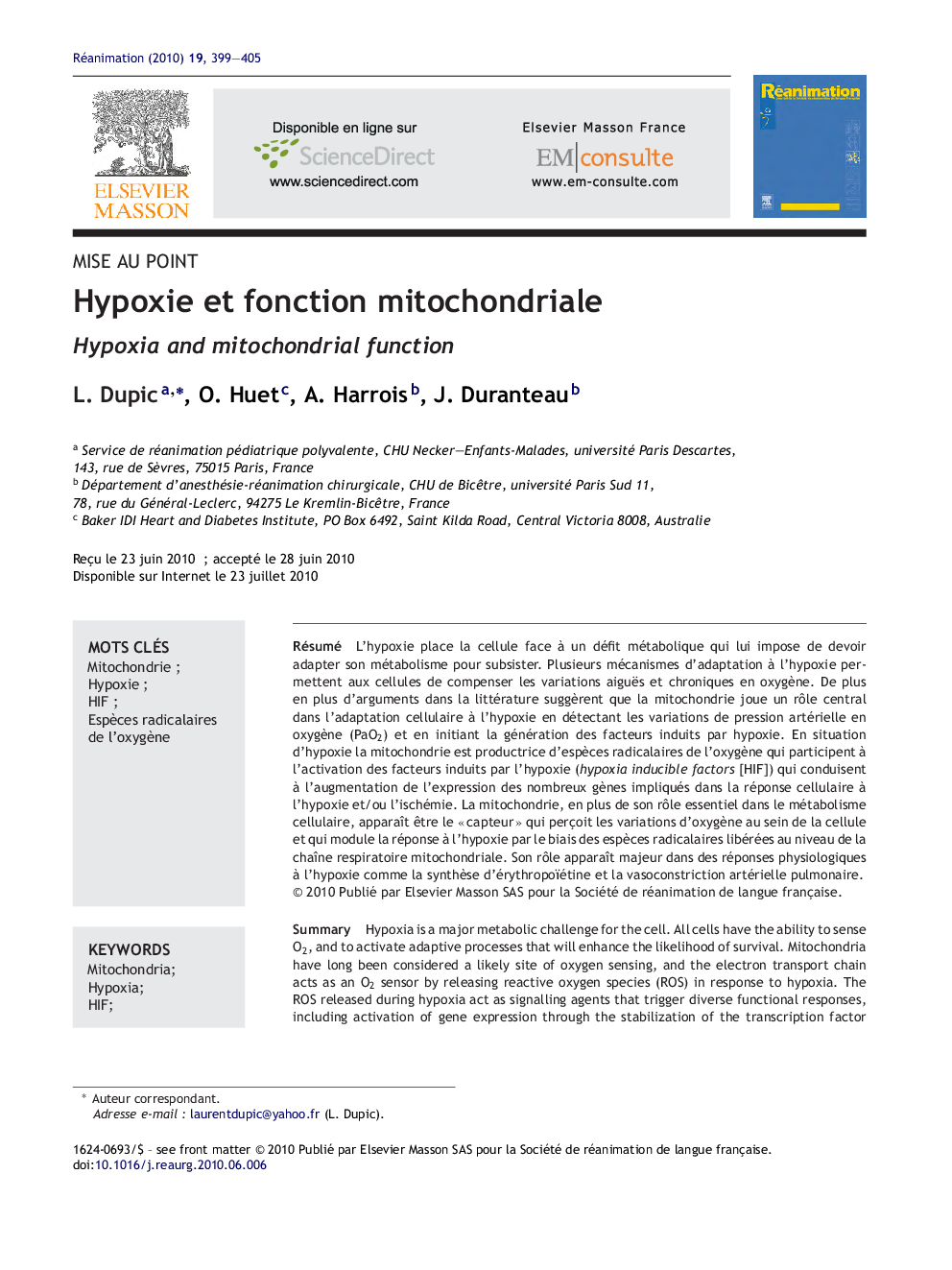| Article ID | Journal | Published Year | Pages | File Type |
|---|---|---|---|---|
| 2613180 | Réanimation | 2010 | 7 Pages |
Abstract
Hypoxia is a major metabolic challenge for the cell. All cells have the ability to sense O2, and to activate adaptive processes that will enhance the likelihood of survival. Mitochondria have long been considered a likely site of oxygen sensing, and the electron transport chain acts as an O2 sensor by releasing reactive oxygen species (ROS) in response to hypoxia. The ROS released during hypoxia act as signalling agents that trigger diverse functional responses, including activation of gene expression through the stabilization of the transcription factor hypoxia inducible factor (HIF)-α. The primary site of ROS production during hypoxia appears to be the complex III. Well-known examples of specialized oxygen sensing systems include the arterial chemoreceptors that increase the level of alveolar ventilation when PaO2 decreases. Similarly, cells of the liver and kidney adjust the secretion of the hormone erythropoietin in order to assure adequate tissue oxygenation. Cellular hypoxia leads to the upregulation of genes involved in glucose uptake, glucose metabolism, cell survival, vascular tone, cytoskeletal organization, apoptosis, cell adhesion and iron metabolism.
Related Topics
Health Sciences
Medicine and Dentistry
Emergency Medicine
Authors
L. Dupic, O. Huet, A. Harrois, J. Duranteau,
